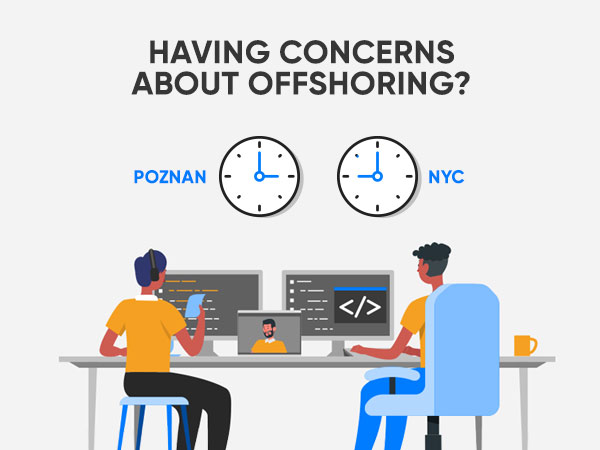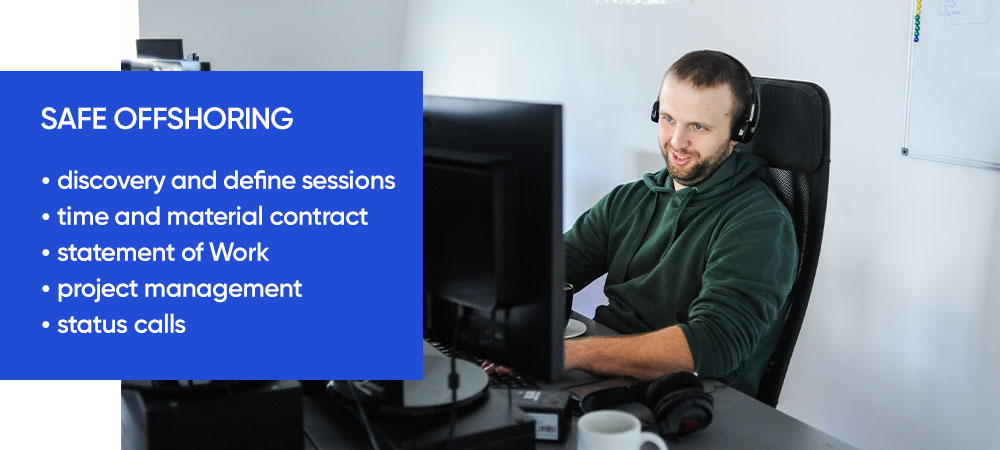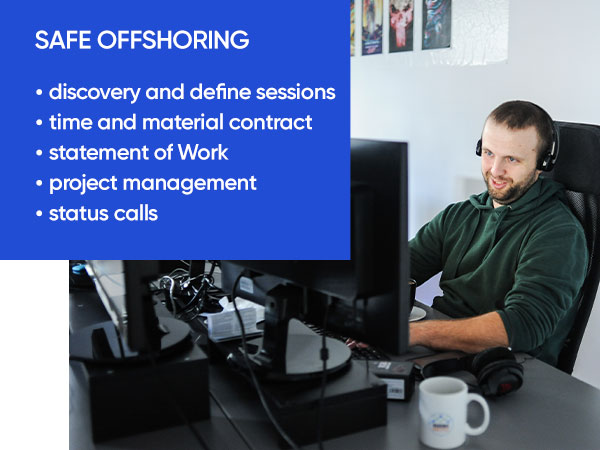A plethora of fears and doubts often accompanies offshoring. Of course, organizational issues are a common concern, but the most significant one is the assurance of timely execution of orders by the offshore company. As a digital solutions partner for the US agencies, we had some excellent opportunities to dispel these concerns in cooperation with our overseas partners and clients. We are happy to share some of our observations and advice.
The past few months have been filled with exciting developments as we expand our horizons and broaden our cooperation with foreign companies. We have been collaborating intensively as an external development department with marketing agencies in the UK and have recently discovered new opportunities emerging from Scandinavian countries. However, the most promising prospects have come from overseas destinations - USA and Canada. We are thrilled to have established partnerships with American digital agencies, software houses, and end clients from the logistics and financial industries interested in leveraging our .NET solutions.
Our overseas partners often raise similar concerns in the initial talks, resulting from their previous experience with offshoring digital services. The most common is probably:
Overpromising and underdelivering
This is a concerning pattern that usually appears in offshore companies offering attractively low rates for IT services. It's a trap that many small and medium firms run themselves into in pursuit of the customer, sometimes despite honest intentions.
The sources of this pitfall are:
- exaggerated promises
- underestimating the complexity of the work
- failing to communicate potential challenges
The results are delays, subpar quality, or even complete failure to deliver the project.
How to avoid overpromising and underdelivering
From our foreign partners sharing their previous experiences, we heard that when an outsourcing company answers everything with the immortal "yes, we can" from the beginning and does not ask too many questions, it usually means a red flag.
We never make the mistake of taking on a project we won't be able to deliver. That's why the number of questions we send to partners before starting work can seem overwhelming and tedious, but the result is often the completion of the project ahead of schedule and spot-on estimates. Our cooperation starts with:
Discovery and define session
The discovery and define phase usually means a mix of brainstorming, discussion, and documentation to ensure everyone is on the same page and clearly understands the project's goals and requirements.
How we usually do it (in short):
- The client provides us with the scope of the projects, designs, specifications, or access to the current solution that needs to be fixed/upgraded/replaced.
- We compare the client's expectations with our estimates and approach.
- We devise a list of things to do - our commitment to work.
Other ways to ensure the quality of work:
Time and material contract
A Time and Material contract is a type of agreement where the payment is based on the actual time spent by the contractor to complete the project and the cost of the materials used.
The client agrees to pay the contractor for the actual hours worked and the cost of materials rather than a fixed price for the entire project. It's helpful when the scope of work is difficult to define or when the requirements are likely to change during the project.
The contractor is typically required to provide detailed records of the time spent and materials used, and the client is billed periodically based on these records. The hourly rate and material costs are specified in the contract.
It all allows for greater flexibility in project requirements, as the client can make changes to the project without renegotiating the entire agreement.
A Statement of Work (SOW)
SOW is a simple document that outlines a project's objectives, scope, deliverables, and timeline. Usually, it includes:
- A clear statement of what the project is intended to achieve.
- A detailed description of the work that will be performed.
- A schedule that outlines when each task will be performed and when each deliverable will be completed.
- Any limitations or constraints that could impact the project, such as budgetary, legal, or regulatory constraints.
Yes, the initial phase of establishing cooperation is long and usually paid for by the client. We want to consult everything with the developers involved in the project carefully, and we respect their time. Thanks to this, however, we can provide the client with the minimum of unpleasant surprises during the work.
COMMUNICATION
For years, we have been operating primarily in foreign markets. Therefore, we ensure that all our developers are fluent in technical English, can understand the nuances of documentation and e-mails from customers, and do not waste time translating and explaining.
In addition, all contact persons in our company are fluent in spoken English. When choosing an offshore company, it is worth paying attention to direct communication from the very beginning - how potential contractors respond to emails, how they conduct a live conversation, and whether details don't get lost between words.
THE TIME DIFFERENCE
While one of the key reasons for choosing nearshoring instead of offshoring is the ability to work in the same time zone, we have found that the time difference has not posed a significant issue in our collaborations with overseas companies.
By scheduling morning meetings for our partners in North America, these meetings conveniently fall into our afternoons and provide an effective means for coordinating our work. Additionally, since we begin work while our American and Canadian partners are still asleep, we can complete critical project stages before they start their day.
Benefits of offshoring: is it just the cost?
According to various job sites, the wage of an experienced Senior .NET developer in the US can be over $90 an hour. In addition, specialists with experience in developing specific systems, such as Umbraco or Kentico, may be hard to find.
In this context, our rates are competitive, considering all our developers have at least five years of experience, and junior-level developers are involved in projects only under the supervision of a senior.
Lowering costs is not the only value we can bring to your business. Many companies offering team extension services simply "rent" specialists. The web developer receives a ticket with tasks to be performed and deadlines. This is a purely transactional approach that may work for some projects.
However, we prefer partnerships and the gradual building of trust between our institutions.
You can get your dedicated dev team and a dedicated project manager from us, who will take care of the organizational part of cooperation and information exchange. If you run an agency, we can also contact the end customer directly on your behalf to refine some technical details.
After years of perfecting our approach to collaboration with diverse clients, we remain adaptable and receptive to fresh opportunities. Every interaction brings valuable insights, and we take pleasure in investing the necessary effort to establish an optimal framework for partnering with your organization.





